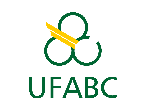PPGCTA
PÓS-GRADUAÇÃO EM CIÊNCIA E TECNOLOGIA AMBIENTAL
FUNDAÇÃO UNIVERSIDADE FEDERAL DO ABC
Phone:
1142242590
E-mail:
pgcta@ufabc.edu.br
http://propg.ufabc.edu.br/ppgcta
Banca de QUALIFICAÇÃO: THAIS DE ARAUJO GOYA PEDUTO
Uma banca de QUALIFICAÇÃO de MESTRADO foi cadastrada pelo programa.DISCENTE : THAIS DE ARAUJO GOYA PEDUTO
DATA : 21/11/2019
HORA: 14:00
LOCAL: sala 301, 3º andar, Bloco B, Campus SA da Fundação Universidade Federal do ABC, localizada na Avenida dos Estados, 5001, Santa Terezinha, Santo André, SP
TÍTULO:
Phytotoxicological evaluation of waters and sediments of the Rio Grande Reservoir and its relationships with environmental variables
PÁGINAS: 80
GRANDE ÁREA: Engenharias
ÁREA: Engenharia Sanitária
SUBÁREA: Saneamento Ambiental
ESPECIALIDADE: Qualidade do Ar, das Águas e do Solo
RESUMO:
Eutrophication is a major environmental problem today and has several undesirable consequences for aquatic ecosystems and water-producing systems such as: exacerbated algal and aquatic plant proliferation, depletion of dissolved oxygen concentrations, fish mortality, proliferation cyanobacteria, need for application of algicides in water sources (ex: CuSO4), clogging of Water Treatment Stations (ETAs) filters and increased costs of water treatment. In particular, cyanobacteria can produce cyanotoxins, posing a risk to biota and public health. Eutrophication is triggered by improper release of wastewater containing nutrients, especially phosphorus. In addition, wastewater may contain other substances such as heavy metals, hormones, drugs, and others, which may also increase the risk associated with the consumption of these waters, as several substances are not removed by conventional ETAs. The Rio Grande Reservoir is a key player in supplying the population of the São Paulo Metropolitan Region. However, this tank receives discharges of untreated or inefficiently treated wastewater and is thus eutrophic and polluted by various substances. Monitoring is another sanitary barrier to ensure water quality. Current legislation (CONAMA 357/05) provides for the analysis of several parameters, including toxicity tests. However, often these are costly or time consuming to respond. Therefore, the objective of the present study was to evaluate the phytotoxicity of waters and sediments of the Rio Grande Reservoir through seed bioassays and to correlate with environmental variables. Five sampling campaigns were carried out in three sampling stations: (1) Sabesp capture, (2) Reservoir central body and (3) near Ribeirão Pires stream and limnological variables determined. The bioassays with C. sativus, L. sativum and S. alba seeds (n = 6) evaluated the phytotoxicity of the water samples and will be performed for sediment extracts. Statistical analyzes, Principal Component Analysis and Multivariate Analysis of Variance will be performed to identify differences or similarities in the results. Among the main partial results, it was observed that all seeds obtained a high germination percentage, with most of the IG results higher than 100, indicating that the water samples potentiated the germination. Thus, the study aims to contribute to advances in the evaluation of the potential use of seed bioassays as another line of evidence in water quality assessment, as these trials are low cost and relatively rapid response. The research is part of the project entitled “Relationship between limnological variables (abiotic and biotic) and seasonality in CH4 and CO2 gas flows in river regions of Billings and Guarapiranga dams (São Paulo - SP)” funded by the State Research Support Foundation of São Paulo - FAPESP (Process: 17/10355-1).MEMBROS DA BANCA:
Presidente - Interno ao Programa - 1809833 - TATIANE ARAUJO DE JESUS
Membro Titular - Examinador(a) Interno ao Programa - 1814655 - LUCIA HELENA GOMES COELHO
Membro Titular - Examinador(a) Externo à Instituição - ANA LUCIA BRANDIMARTE - USP
Membro Suplente - Examinador(a) Externo ao Programa - 3047358 - RICARDO HIDEO TANIWAKI
Notícia cadastrada em: 10/10/2019 09:21
SIGAA | UFABC - Núcleo de Tecnologia da Informação - ||||| | Copyright © 2006-2024 - UFRN - sigaa-2.ufabc.int.br.sigaa-2-prod




